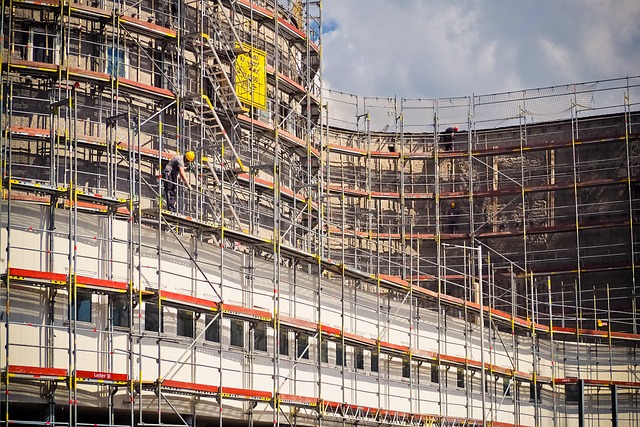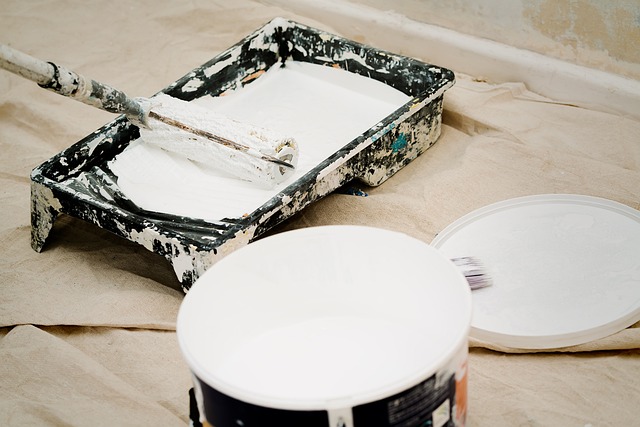Introduction
Renovation companies play a pivotal role in transforming and revitalizing the built environment, from residential spaces to commercial buildings. These entities specialize in breathing new life into existing structures, enhancing their functionality, aesthetics, and sustainability. The relevance of renovation companies is underscored by the need for sustainable development practices, the rise in property values post-renovation, and the demand for adaptable spaces that can evolve with changing needs and technologies. This article delves into the multifaceted world of renovation companies, exploring their impact on various sectors, the economic implications, technological advancements, and the regulatory frameworks that govern them. Readers will gain a comprehensive understanding of the role these companies play and the future prospects they hold within the industry.
Understanding Renovation-Companies
Renovation companies are entities that focus on refurbishing, upgrading, or restoring existing structures to enhance their condition, extend their lifespan, or adapt them to new uses. These firms encompass a spectrum of services from minor renovations and repairs to complete overhauls. The core components of a successful renovation company include:
- A team of skilled professionals, including architects, engineers, designers, and construction workers.
- A deep understanding of building codes, safety regulations, and environmental standards.
- A strategic approach to project management, resource allocation, and scheduling.
- A commitment to sustainable practices and innovative materials.
Historically, renovation companies have been crucial in preserving historical buildings and adapting them for modern use while maintaining their integrity. Their significance lies in their ability to contribute to the economic vitality of communities by improving property values and creating job opportunities. They also play a role in reducing waste and promoting sustainability by repurposing materials and conserving resources.
Global Impact and Trends
The global impact of renovation companies is evident in urban regeneration projects, heritage restorations, and the transformation of commercial and residential spaces to meet contemporary demands. Key trends influencing this sector include:
- A growing emphasis on sustainability and green building practices.
- The adoption of smart home technologies that enhance energy efficiency and security.
- The rise in demand for adaptable spaces that can accommodate remote work and flexible living arrangements.
- The use of virtual reality (VR) and 3D modeling to visualize renovations before they are implemented.
Different regions are affected by these trends in unique ways, with urban centers like North America and Europe leading the way in green building certifications and high-end tech integrations, while emerging markets prioritize cost-effective renovations that improve living conditions without significant investment.
Economic Considerations
Renovation companies are integral to the economic ecosystem as they stimulate job growth, contribute to local economies, and drive demand for building materials and products. Market dynamics within this sector include:
- A balance between maintaining historical character and incorporating modern amenities.
- Investment patterns that favor properties with potential for energy savings and increased property values.
- The role of renovation companies in revitalizing neighborhoods and attracting new businesses and residents.
In economic systems, these firms often serve as indicators of market health, reflecting consumer confidence and spending habits. They also provide a cost-effective alternative to new construction, which can be more resource-intensive and expensive.
Technological Advancements
Technology has revolutionized the renovation industry with advancements that enhance efficiency, safety, and sustainability. These include:
- The use of Building Information Modeling (BIM) for precise planning and execution.
- Advanced insulation materials that improve thermal performance and energy conservation.
- Smart home technologies that integrate lighting, climate control, security, and entertainment systems.
The future potential of technology in renovation projects is vast, with innovations like self-healing concrete, IoT-enabled devices for monitoring and maintenance, and AI-driven design software promising even more transformative impacts on the industry.
Policy and Regulation
Policies and regulations play a critical role in shaping the renovation industry. Key considerations include:
- Building codes that ensure safety and accessibility.
- Incentives for green building practices and energy-efficient upgrades.
- Zoning laws that determine allowable uses of property and guide development.
Legislative frameworks, such as the Lead Renovation, Repair, and Painting Rule (RRP Rule) in the United States, are designed to protect public health by reducing lead exposure during renovations. These regulations not only govern construction activities but also influence consumer behavior and investment decisions.
Challenges and Criticisms
Renovation companies face several challenges and criticisms, including:
- Navigating complex regulatory environments that can delay projects and increase costs.
- Balancing the preservation of historical structures with modern functional requirements.
- Addressing concerns about construction waste and its environmental impact.
To overcome these issues, companies can adopt sustainable practices, engage in community outreach to align with local needs, and utilize advanced project management tools to improve efficiency and transparency. Education and training for workers can also address the skills gap and ensure that renovation practices are up-to-date with the latest standards and technologies.
Case Studies
To illustrate the impact of renovation companies, let’s examine two case studies:
-
Historic District Revitalization: In a historic district, a renovation company restored old buildings while maintaining their architectural integrity. The project included updating electrical and plumbing systems, implementing energy-efficient designs, and repurposing structures to accommodate modern commercial uses. This initiative not only preserved the area’s cultural heritage but also stimulated economic growth and community pride.
-
Sustainable Suburbia: A renovation firm specializing in sustainable upgrades transformed a typical suburban home into a net-zero energy home. The project featured solar panels, high-efficiency appliances, advanced insulation, and smart home technologies. This case exemplifies how renovations can significantly reduce a home’s carbon footprint while increasing its comfort and value.
Future Prospects
The renovation industry is poised for growth as the demand for sustainable and adaptable living and working spaces continues to rise. Innovative technologies, green building standards, and evolving consumer preferences will drive this sector forward. Renovation companies that can adapt to these changes and leverage new opportunities will lead the way in creating spaces that are not only aesthetically pleasing but also environmentally responsible and economically viable.
Conclusion
Renovation companies serve as vital players in the construction industry, contributing to economic development, environmental sustainability, and community revitalization. By embracing technological advancements, adhering to stringent policies and regulations, and overcoming challenges through innovation and education, these firms can continue to thrive and shape the future of built environments. As we look ahead, the renovation industry stands as a testament to the potential for transformation and renewal in both structures and communities.
Choosing a reputable renovation company with a proven track record is essential for successful home renovation projects. A company's industry reputation, as evidenced by client reviews and testimonials, indicates their dedication to quality workmanship and reliability. Their portfolio showcase…….
When planning a home renovation, it's crucial to consider both the necessity and fit of the project with the help of a reliable renovation company. These professionals evaluate structural integrity, design relevance, and space functionality, ensuring homeowners make informed decisions about the…….
Engaging a skilled renovation company for your home improvement project is key to unlocking its full potential. These professionals bring expertise, experience, and meticulous attention to detail to your renovation, ensuring personalized designs with top-quality materials that align with your uniqu…….
Engaging a seasoned renovation company for your home renovation is highly advantageous, offering a seamless blend of design, material choice, and construction expertise to create living spaces that are both stylish and functional. These professionals handle all aspects of the renovation process, fro…….
Choosing a professional renovation company for your home renovation is crucial for elevating its visual appeal, enhancing functionality, and significantly increasing market value. These experts specialize in managing projects from design to completion, ensuring compliance with building regulations,…….
Homeowners planning a renovation should consider the lifespan and maintenance requirements of various home elements to ensure both practical and cost-effective outcomes. A professional renovation company specializes in evaluating structural components like roofing and electrical systems, and can gui…….
Choosing the right renovation company is essential for a successful home renovation. Begin by researching and obtaining recommendations from trusted sources, then evaluate the companies' online presence and portfolios to assess their quality of work, design capabilities, and client satisfactio…….
When planning a home renovation, it's essential to consider how the upgrades will influence your property's future value while enhancing your current living experience. A reputable renovation company can provide expert advice on which improvements will yield the best return on investment,…….
Engaging in a home renovation project can be complex, but partnering with an experienced renovation company streamlines the process and elevates the outcome. These professionals excel at transforming your home renovation vision into reality, emphasizing quality and professionalism throughout all st…….
Choosing a seasoned renovation company for your home renovation project offers numerous advantages over handling it independently. Such companies specialize in transforming homes into updated, functional, and comfortable spaces that cater to individual lifestyles, ensuring minimal disruption during…….









